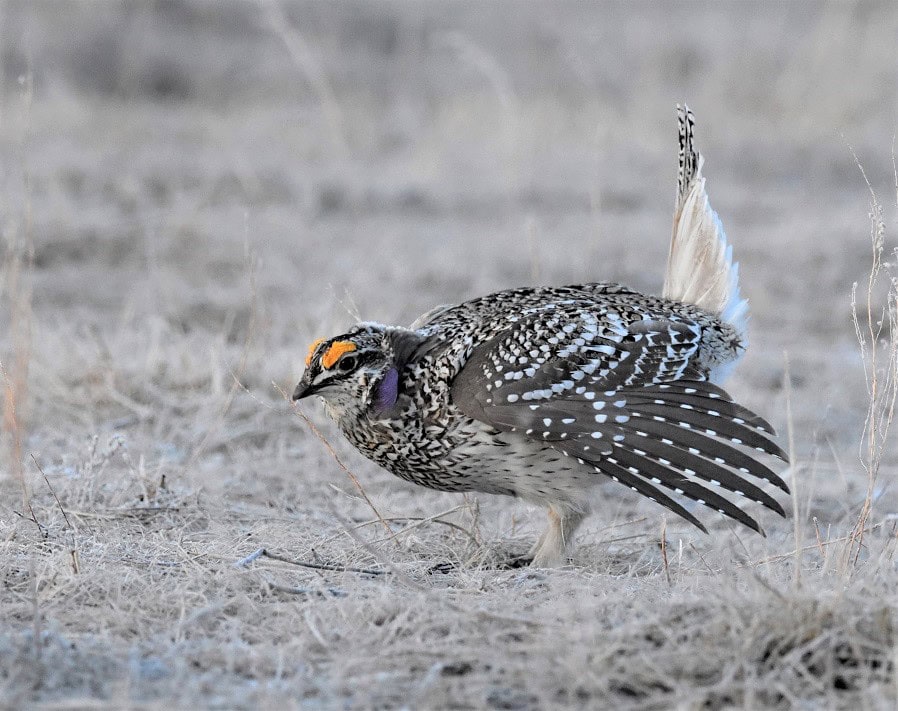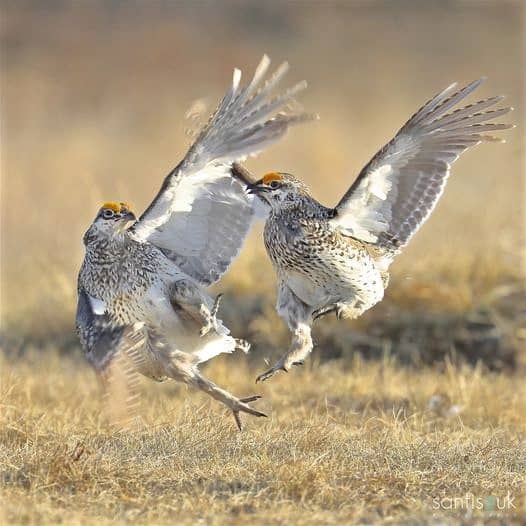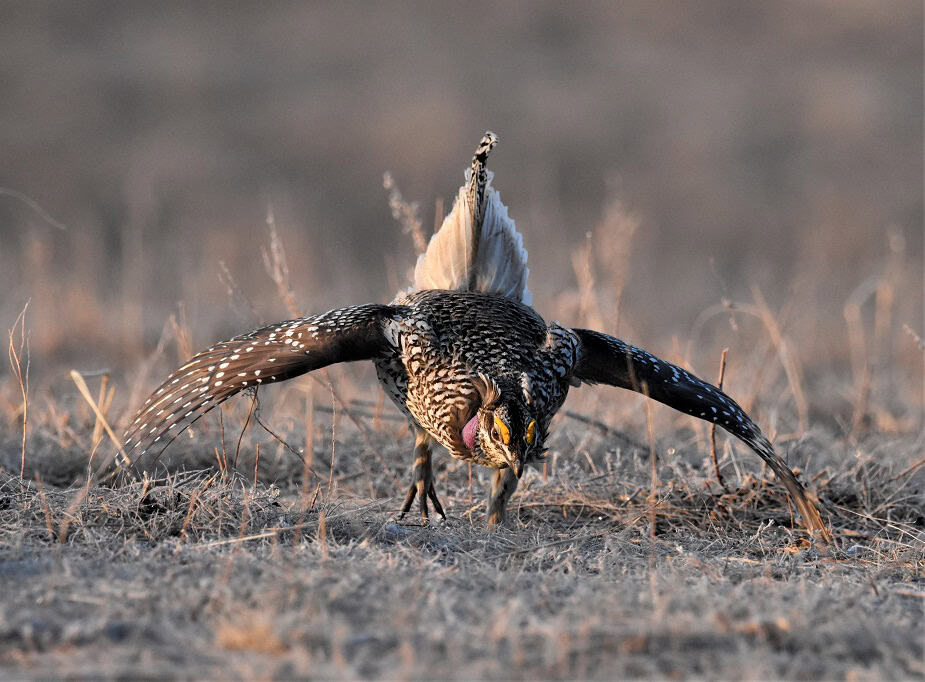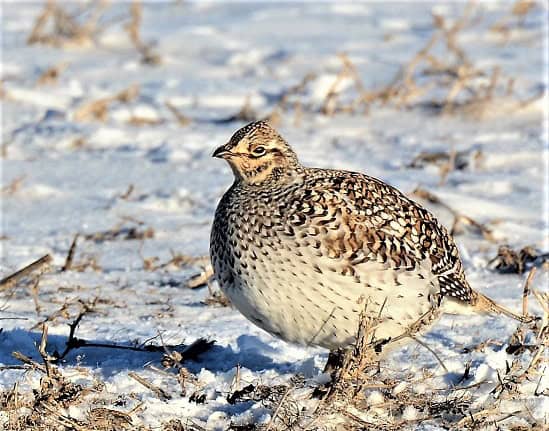
The Sharp-tailed Grouse
The Sharp-tailed Grouse is one of nine species of grouse in North America. This includes two called “Prairie Chickens”, but they are the same as grouse. It does not include Quail, Bobwhite, Partridge, Chukar or Ptarmigan, all chicken-like birds belonging to the same family of Phasianidae, which has 185 species worldwide. This article will cover only the Sharp-tailed grouse, found mainly in the centre of North America on the short-grass prairie.
They are primarily drab, a mixture of brown, black and white. They have a short, pointed tail which gives them their name. The breast is white and covered with brown “V-shaped” marks.
The Lek
A lek is a place where some species of birds gather in the spring to compete for a mate. I don’t know what makes one patch of grass better than another, but the grouse have been coming to the exact same spot each spring for hundreds of years.
Because it is known where they will gather, it is possible to build blinds, and people can have an opportunity to witness their mating rituals at close range.
The Experience
I got up at 0330. I met with other people in our group at 0430, and we drove to the lek and hid ourselves in the blind. We had to be in the blind before daylight to avoid scaring the grouse away. We started to hear them cackling even before it got light enough to see them.
It was a strange, beautiful and fascinating experience. Something that I will never forget. If you ever get the opportunity to witness this, go for it. It is definitely worth getting up in the middle of the night.
The Mating Ritual
Male grouse gather on their lek at dawn to perform their ancient mating dance. The idea is to control the centre of the lek. The weaker males will be pushed to the fringe.

This photo used with the kind permission of Santisouk Photography. To see more of her great wildlife photos click here. All other photos by Birdtripper. All photos on this website are copywrite and must not be used without permission of the respective owners.
They sometimes take a running jump at each other and bite and kick, but mostly they bully the lesser males to move the edge of the lek.
How do they do that? They do it with an ancient dance that the strongest males use to intimidate their weaker companions.

First, the male grouse has to prepare himself for the display. The bright orange eyebrows are not enough. A large, purple gular air sac is inflated on each side of the neck. (some other species, such as the Spruce Grouse, have them in front). This causes the feathers that normally cover the air sac to stand erect above the bird’s head, like horns. Then the tail, which is usually parallel with the body and comes to a point, is erected and spread out. In the centre of the tail is a long feather different from other tail feathers. It is long, black-and-white and square-tipped, while the other feathers are white and pointed, called the “deck feather”. With his gular air sac inflated and his tail erected, he is ready to dance.
Sound Effects
As if this ostentatious display is not enough, there are also sound effects. The Sharp-tailed Grouse makes three different sounds while dancing. One is made with the mouth. They make several sounds, including cackling, whistling, and cooing. Another is made by rustling the wing feathers. A third sound is made by stamping their feet up to 20 times per second.
At the beginning of this video, a male Sharp-tailed Grouse intimidates another male and gets him to leave his patch in the centre of the lek. Then he patrols his patch. Then he confronts another male who has dared to enter his space. You can see another grouse in the background defending his patch. Each grouse has their own little area. However, constant competition exists to change one’s patch for another closer to the centre of the lek.
The following video shows two Sharp-tailed Grouse in a confrontation. Eventually, one of them will give in and move further from the centre of the lek.
Grouse doing the chicken dance
Sharp-tailed Grouse are chicken-like birds, and they perform their mating dance to intimidate other males. For a bit of fun, I added the soundtrack from the Chicken Dance.
The Females

Female Sharp-tailed Grouse are similar to the males but without orange eyebrows.
With the male grouse doing the Chicken Dance, the females watch from the edge of the lek. Eventually, they will mate with the grouse that control a patch of ground near the centre of the lek. That is the purpose of all the dancing after all.. The males who end up at the fringe of the lek will be out of luck.
Conclusion
It was a wonderful experience to witness the Sharp-tailed Grouse performing their mating rituals. Jokes about the chicken dance aside, it is a fantastic display of nature that I will never forget. If you get the opportunity to visit a grouse lek, you should definitely go. Contact your nearest birding or nature club to see if there is a lek near you.
Maravilloso, nunca hubiera imaginado un baile asi